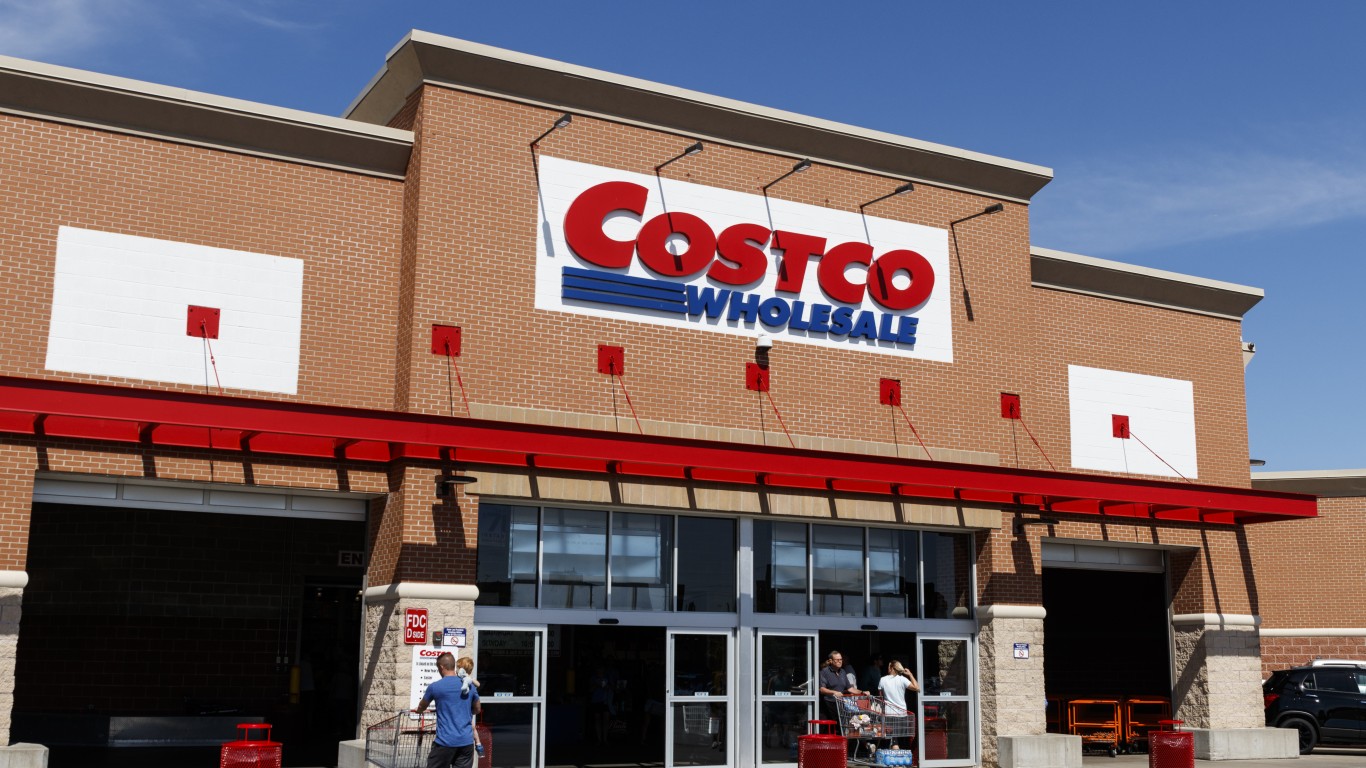

Whole Foods Market Inc. (NASDAQ: WFM) has been one of the greatest fairy tale stories in food and grocery trends of a lifetime. After years of being one of the leaders in promoting the organic and natural foods theme to the point that these have become mainstream issues, the company’s old business model has cracked and faltered to the point that its shareholders have been punished. Whole Foods has been under attack from a slew of newer “me too” competitors and from traditional grocery stores, yet it still gets referred to by customers and consumers as “Whole Paycheck.”
Now Whole Foods has an activist investor group nibbling on its heels. After months and months of Wall Street pointing out that Whole Foods needs an activist investor to come in, JANA Partners has done that. From February 9, 2017, to April 10, 2017, JANA and some outside partners who have been brought on have acquired more than 27.8 million shares on a fully diluted basis if you include stock options.
Before getting into the efforts and reasons for an activist, there are some serious issues that will get in the way of at least some efforts by activists here. Whole Foods thrived for years, but its growth and its relevance have gone off-track. It has an onslaught of competition, and there may be little room to work on pricing at the consumer level.
Whole Foods has changed its actual image in many of its stores by moving from traditional woods and earthy presentations to something that looks and feels more like an Apple store combined with a grocery store. That alone might not be an issue, but it doesn’t set the company apart from other stores any longer.
Whole Foods has seen serious changes among the service and employment trends in its stores. The company’s layoffs in recent years took an obvious bite out of service at counters and at the register almost immediately. Some of the benefits and pay that used to attract employees have been cut down or have been made harder to achieve.
Perhaps the largest issue that JANA or any other activist will face is that there is an internal pricing dilemma at Whole Foods with or without competition. Even when grocery price deflation was hurting traditional grocers, Whole Foods prices only seemed to rise higher and higher. Many of its items have become priced at levels that they just don’t feel worth the price versus traditional grocery store prices. Maybe an activist can make up the money if they generate more sales through volume at lower prices, but that is margin-negative unless they can somehow drive down costs. Hint: this is at a time when driving down costs is hard to do in a reflationary environment and in a wage-pressured environment.
Outside of the internal pricing woes is an issue that traditional grocery stores like Kroger and Safeway (among others) offer many of the exact same products at lower prices. Wal-Mart is even in the organic food game, as are other big-box retailers like Costco. And then there is the me-too group of Sprouts Farmers Market and others, and ditto for harsh competition from Trader Joe’s for well over a decade now.
Private label offerings under the 365 brand may have helped cap price growth, but some of the former products from Whole Foods have been missed by customers. The old grocery store chain competition already had been in private label offerings before Whole Foods went further into that, and many stores now have organic and natural private label offerings.
Another risk for activists targeting Whole Foods might seem like a plus rather than a risk. Consumers have wanted more healthy choices regardless of the source. This means that other sellers of groceries have had to adapt to cleaner and environmentally friendly offerings regardless of Whole Foods at this point. It also means that the consumer doesn’t have to just rely on Whole Foods for more natural and organic offerings. In effect, Whole Foods may have a huge role in having created the trend toward natural and organic, and now customers don’t care where they get their healthier food from. Go ask any retailer how they feel now that customers are willing to buy endlessly off of Amazon (which is also getting deeper into groceries) at their expense.
One recent analyst report pointed out that Whole Foods has a serious customer traffic problem. The reasons above, and perhaps many other issues, make this a very difficult situation.
Maybe JANA and its outside partners being brought on for this effort face an uphill challenge here. If JANA thinks it can just step in and raise prices or to cut costs further, this effort may prove to be a waste of time. Below are some of the details of the efforts and goals of the activists.
Several key issues were brought up, some of which may sound familiar if you have followed activists for very long. These comments are from JANA and the reporting persons in the filing, noted as follows.
JANA believes Whole Foods shares are undervalued and represent an attractive investment opportunity, and they have experience analyzing and investing in the grocery sector and more broadly across the food and retail sectors.
JANA intends to have discussions with the Whole Foods board of directors and management over underperformance, changing the board and senior management (and addressing governance) optimizing real estate and capital allocation strategies (including the “365” small store format and opportunities to improve returns on invested capital), and to seek opportunities to improve performance in brand development and addressing core operating deficiencies (customer loyalty and analytics, category management and analytics, technology and digital capabilities).
Some of the other items were noted as follows:
- Procurement and buying practices
- Pricing strategies, value proposition communication, and online offerings
- Improving in-store execution
- Private label program strategy and management
- Assessing broader cost structure and operating opportunities
- And re-engineering grocery procurement and distribution strategy
Perhaps the key issue here is that this could lead to a sale. JANA noted that it plans on initiating a review of strategic alternatives, particularly in light of an apparent unwillingness to engage in discussions with third parties regarding such alternatives.
JANA further noted that it is also prepared to nominate individuals for board seats and to participate in the solicit proxies in support of such individuals.
The aggregate voting power for JANA Partners is 26,314,367 shares, including options to purchase 3,535,000 shares. This represents roughly 8.3% of the shares outstanding. These shares were acquired by JANA at an aggregate purchase price of approximately $705.6 million, with investment funds in accounts managed by JANA and margin borrowings. When you include reporting persons, the total aggregate was shown to be 27,882,035 shares if you include the options to purchase 3,535,000 shares. That is an aggregate purchase price of roughly $721.2 million. The filing noted the following holders:
- Mr. Murphy used a total of approximately $44 million in the aggregate to acquire the 1,457,078 Shares reported herein as beneficially owned by him.
- Ms. Dietz used a total of approximately $3.1 million in the aggregate to acquire the 101,000 Shares reported herein as beneficially owned by her.
- Mr. Dickson used a total of approximately $155 thousand in the aggregate to acquire the 5,275 Shares reported herein as beneficially owned by him.
- Ms. Adler used a total of approximately $100 thousand in the aggregate to acquire the 3,455 Shares reported herein as beneficially owned by her.
- Mr. Bittman used a total of approximately $25 thousand in the aggregate to acquire the 860 Shares reported herein as beneficially owned by him.
Whole Foods shares did react positively to the news that JANA has partnered up with industry powerhouses to shake things up. The stock was up 10% at $34.15 in the final minutes before Monday’s close. The 26 million shares that traded hands represented more than five times normal trading volume. Whole Foods has a 52-week trading range of $27.67 to $35.58 — down sharply from a high of $65 or so in 2013. The consensus analyst price target was last seen at $28.38.
Getting an activist investor involved in a company like Whole Foods might be what the company needs to try to fix some of its missteps. It might also be a no-brainer for a former high-flyer to get some pressure to boost shareholder interest again. Then again, you have seen just a portion of the risks and hurdles that need to be overcome before an activist investor can force Whole Foods back on track for investors.
Take This Retirement Quiz To Get Matched With An Advisor Now (Sponsored)
Are you ready for retirement? Planning for retirement can be overwhelming, that’s why it could be a good idea to speak to a fiduciary financial advisor about your goals today.
Start by taking this retirement quiz right here from SmartAsset that will match you with up to 3 financial advisors that serve your area and beyond in 5 minutes. Smart Asset is now matching over 50,000 people a month.
Click here now to get started.
Thank you for reading! Have some feedback for us?
Contact the 24/7 Wall St. editorial team.
 24/7 Wall St.
24/7 Wall St.


